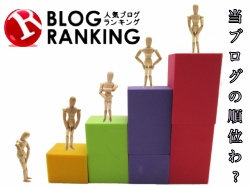Unsecured, Term, and Revolving Personal Loans
A loan is an agreement in which a person or organization lends money to another individual or entity. The loan recipient incurs a debt, which must be repaid, along with interest, until the money is paid off. Unsecured personal loans can be taken out for a variety of purposes, including debt consolidation. In addition, you may be able to use a loan to consolidate other debts. Here are some of the most common types of personal loans:
目次
Unsecured loans are less risky than secured loans
If you are unsure of your credit worthiness, you may want to take out an unsecured loan. These types of loans do not require collateral, but they are still risky. A borrower who defaults on an unsecured loan can face serious consequences, including a lower credit score. In addition, a delinquent payment on an unsecured loan will appear on a borrower’s credit report for up to seven years. Unsecured loans will also usually come with higher interest rates than secured loans.
Secured loans have lower loan rates because the lender is protected by the borrower’s collateral. On the other hand, an unsecured loan is not protected by collateral, and the lender can recoup their money if the borrower defaults. Since an unsecured loan doesn’t require collateral, it is often easier to qualify for, even with a bad credit history or limited assets. Unsecured loans are less risky than secured loans, but the repayment terms and interest rates can be higher.
While both types of loan are risky, unsecured loans are the safer option for smaller amounts. In addition to being less risky, they can be processed more quickly. For example, a secured loan can take weeks or months to get approved. Unsecured loans, on the other hand Rix guide to paying off fast, can be approved instantly. Therefore, they’re an attractive option for those who are just starting to repair their credit or need money now.
As long as a borrower has a job, an unsecured loan is less risky than a secured one. Secured loans are a better choice if you’re not able to keep your job. Unsecured loans are also easier to dismiss in bankruptcy court. These types of loans are also better for small businesses than their secured counterparts. When choosing a secured loan, make sure the interest rate and repayment term are right for you.
Term loans are repaid over time
Most loans are repaid over time, in installments. These payments normally include interest on the balance that is unpaid and a portion of the principal amount. The term loans have favorable rates and repayment terms. In order to qualify for a term loan, you must have a good credit rating and provide detailed financial information. Some lenders may charge origination or prepayment penalties if you choose to repay the loan early. Other options include short-term and intermediate-term loans, which are typically shorter term.
A term loan has lower interest rates than short-term loans. The interest rate on a term loan is usually fixed, and you can find loans with rates as low as 6%. However, you should pay attention to any fees associated with a term loan, such as application or origination fees, which may add to the interest cost. However, the benefits of a term loan are well worth the extra cost of the loan.
A term loan is a loan with a predetermined length of time to repay the loan. The term may be one year, five years, or more. Some lenders also offer a short-term loan that is typically only 18 months long, which is useful for smaller purchases. Long-term loans, on the other hand, can be up to 25 years long. However, the terms and interest rates for each of these loans may differ. If you need a large sum of money to make a large purchase, a term loan may be the right choice.
A longer loan term means higher monthly payments and higher interest costs. The shorter the term, the lower the interest cost, although higher monthly payments will increase the total cost of ownership. Depending on the interest rate, a long-term loan can save you thousands of dollars on interest. If you can afford to pay the loan in full, a longer loan term may be the better option for you. Although it may take more time to repay the loan, it is the best option for your situation.
Revolving loans are open-ended lines of credit
Revolving loans are open-ended lines to credit that allow the borrower to make use of the funds over again. These lines of credit can be used for a variety of purposes. While the flexibility is advantageous, it can also be dangerous for a consumer’s credit. It is therefore important to know how a line of credit works and what risks are involved before obtaining one. In the United States, the use of these lines of credit is on the rise.
The risk for business lenders is higher with revolving lines of credit. This means that they are usually offered at higher interest rates than other types of financing. While they may seem attractive for large purchases, revolving lines of credit often come with commitment fees that ensure future use of the funds. This fee is rarely charged on other financing options. Therefore, revolving loans are not a good option for everyone.
While a line of credit is similar to a credit card, there are some differences. A credit card has a lower limit than a line of credit. In contrast, a home equity line of credit allows a borrower to borrow money for a specified period of time. However, an auto loan, which requires a lump sum upfront payment, has a limited borrowing limit. The repayment term is generally 10 years, and the borrower cannot use the line to borrow more money.
Open-end lines of credit are different from revolving loans. In open-ended lines of credit, the borrower has a pre-determined amount of credit that is refilled automatically. Upon exceeding the limit, the borrower must pay back the money or interest owed. Some open-end lines of credit also allow a borrower to make payments using a plastic card or special check.
Consolidation loans are unsecured personal loans
You can consolidate a variety of debts using a personal loan. Different types of debt have different interest rates and repayment terms. By comparing rates and fees, you can find the right loan for your needs. Personal loans are available from credit unions, banks, and even online lenders. They can be used for many purposes, including debt repayment and credit card consolidation. However, they don’t come without their drawbacks.
To qualify for a debt consolidation loan, you need to know your credit score and financial situation. It’s important to understand that some debt consolidation methods require a credit check, which may lower your credit score. A debt management plan will allow you to repay the loan over three or five years. Unsecured personal loans, on the other hand, do not require collateral. This means that lenders place a higher emphasis on your credit score.
Using your home as collateral is another option. If you have equity in your home, you can use this loan to consolidate multiple debts. However, this loan does not consolidate student loans. Instead, you should consider a home equity line of credit. This type of loan is similar to a primary mortgage, except that you can consolidate debt by using it as collateral. The advantage of using your home as collateral is that you can usually get a lower interest rate than with a personal loan. Another option is to use a federal student loan consolidation program.
A debt consolidation loan can help you lower your credit utilization ratio. In the long run, it can help you improve your credit score. Using this type of loan is not a solution to all of your financial problems, however. If you’re not careful, you could end up in a worse financial situation and incur higher interest rates. So it’s important to make an informed decision. However, if you’re in debt, you need to make sure that you understand the risks and consequences before taking on a consolidation loan.
Education loans cover the course’s fees and allied expenses
An education loan covers the course’s fees and allied costs. The loan tenure can range between five and fifteen years, depending on the bank’s policies. For first-time borrowers, repayment of the loan is a significant responsibility. It depends on whether the student will find employment, and how long it will take before he can start paying back the loan. However, the lender usually allows borrowers an extension period after the course is completed, which is known as the moratorium period. The moratorium period may last from six months to a year.
Most major banks provide education loans. The maximum education loan amount is Rs 15 lakh for study within India and up to Rs 20 lakh for study overseas. The bank has the discretion to approve the loan amount, which depends on the individual policies. For education loans under Rs 4 lakh, banks do not require collateral and do not require a third-party guarantor. However, if the loan amount is over Rs 7.5 lakh, the bank will require collateral.
Getting a good education is an important part of a happy and successful life. Unfortunately, the cost of higher education is increasing and it can be difficult to fund it on your own. Education loans are an excellent option for deserving students. They cover the course’s fees, allied expenses, and other educational costs. In this way, students can focus on the course, while still enjoying a comfortable life.














